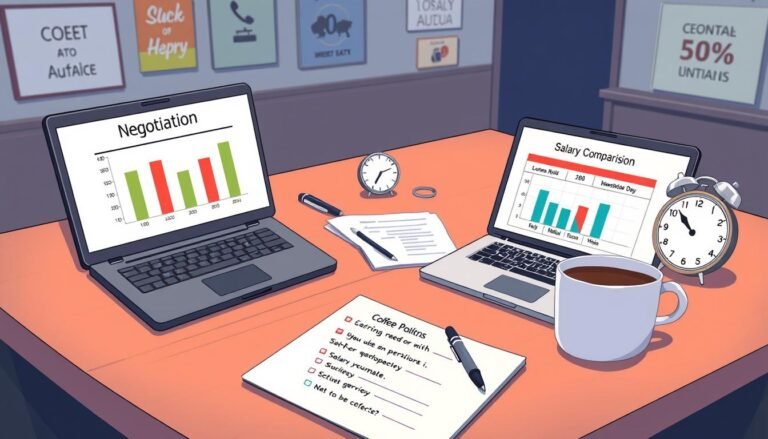The Rise of Mobile Payment Technologies
Mobile payment technologies have changed how we manage money. Digital wallets and contactless payments are leading this change. This shift began in the early 2000s and grew with the rise of smartphones.
Now, mobile payments are everywhere. In China, Alipay and WeChat Pay dominate. India has UPI, and the US is seeing Google Pay’s popularity grow. Apple Pay and Samsung Pay are also major players.
The numbers show an exciting trend. By 2030, the global mobile payment market is expected to reach $587.52 billion. This is a huge increase from $67.5 billion in 2023. The COVID-19 pandemic also sped up this growth. In the US, mobile payment use jumped from 29% in 2019 to 43% in 2021.
These digital wallets are more than just a trend. They make online shopping easier and boost sales for e-commerce sites. They also help people without bank accounts access financial services.
Key Takeaways
- Mobile payments are set to reach $3.9 trillion by 2031
- NFC technology in smartphones is driving contactless payments
- AI is improving security in mobile payment systems
- QR code payments are growing fast, backed by government support
- Asia-Pacific leads in mobile payment adoption
- Retail and e-commerce sectors rely heavily on mobile payments
- B2B mobile payments hold the largest market share
Evolution of Mobile Payment Landscape
The mobile payment world has changed a lot since the early 2000s. This change is huge, moving from old banking to a new digital world. It’s all thanks to smartphones and new tech.
From Traditional Banking to Digital Revolution
Mobile Banking Apps have changed how we handle money. Now, we can send money, get loans, and check our accounts with our phones. Old banks have to change and get new to keep up.
Key Market Statistics and Growth Projections
The global mobile payment market is growing fast. It was worth US$67.5 billion in 2023 and is expected to hit US$587.52 billion by 2030. This shows more people want to use digital payments.
Impact of Smartphone Penetration
More people using smartphones has helped mobile payments grow. In the US, there are about 311.8 million smartphone users. NFC Technology and good internet have made it easy to use mobile payments.
The COVID-19 pandemic made contactless payments even more popular. Mastercard found that during the pandemic, payments without touching grew fast. Even after the pandemic, people kept using these payments.
As mobile payments keep getting better, keeping them safe is key. Since half of banking malware targets Android, strong security is needed. It helps keep our money safe and builds trust in these systems.
The Rise of Mobile Payment Technologies
Mobile payment technologies have changed how we make transactions. Smartphones have made these technologies a big part of our lives. Peer-to-Peer Payments, QR Code Payments, and Biometric Authentication are leading this digital change.
The global mobile payment market was worth $1.48 trillion in 2019. It’s expected to hit $12.06 trillion by 2027. This shows how fast mobile payment solutions are being adopted worldwide.
QR Code Payments are getting more popular, especially in China. Alipay and WeChat Pay handled over $17 trillion in 2022. These platforms have made things like grocery shopping and splitting bills easier.
Biometric Authentication has changed mobile payment security. In places like Mexico, it uses fingerprint and facial recognition. This makes mobile payments safer and more accessible for everyone.
| Payment Method | Adoption Rate | Key Benefit |
|---|---|---|
| Peer-to-Peer Payments | 72% in Europe | Quick money transfers |
| QR Code Payments | Dominant in China | Seamless transactions |
| Biometric Authentication | Growing globally | Enhanced security |
Mobile payments are making life easier for consumers. A study showed 11% of people love paying directly from their phones. This ease, along with strong security, is key to keeping trust in digital payments.
Understanding Mobile Payment Ecosystem
The mobile payment ecosystem is changing how we manage money. Digital wallets and apps are leading this change. They make paying easy and convenient. Let’s look at the main parts of this system.
Digital Wallets and Payment Apps
Digital wallets keep your payment info safe and make transactions fast. Apple Pay, Google Pay, and PayPal are well-known. They use NFC for easy contactless payments, making shopping simple.
Key Industry Players and Market Share
The mobile payment market is growing fast. It was worth $2.98 trillion in 2023 and could hit $27.81 trillion by 2032. Big names include:
- PayPal
- Apple Pay
- Google Pay
- WeChat Pay
- Alipay
In China, WeChat Pay and Alipay are huge, with more than 80% of users.
Infrastructure Requirements
For the mobile payment system to work, some things are key:
| Requirement | Description |
|---|---|
| NFC-enabled devices | Smartphones with Near Field Communication for contactless payments |
| Secure networks | Encrypted connections to protect financial data |
| User-friendly apps | Intuitive interfaces for easy transactions |
| QR code technology | For scan-and-pay options, popular in some regions |
As the mobile payment system grows, new tech like Apple’s tap-to-pay is making payments even simpler. It’s making digital transactions more accessible.
Security Features and Authentication Methods
Mobile security is key in digital payments. New tech brings better ways to keep info safe. Let’s look at the latest security and authentication methods for mobile payments.
Biometric Authentication Systems
Biometric tech has changed mobile security. Smartphones now use fingerprint scanners, facial recognition, and voice analysis. These make checking your identity fast and safe for payments.
A Pew Research Center survey showed 54% of 18- to 29-year-olds use mobile payment apps. Younger users’ love for these apps pushes for better biometric security.
Encryption and Tokenization
Encryption is key in keeping data safe during mobile payments. Tokenization adds more security by using unique tokens instead of real card numbers. Together, they protect user info from threats.
Contactless payments are on the rise. Mastercard saw a 40% global increase in these transactions in Q1 2021. This shows the need for secure tap-and-go options.
Two-Factor Authentication Protocols
Two-factor authentication (2FA) adds extra security to mobile payments. It combines something you know (like a password) with something you have (like your phone) or are (biometric data).
With mobile wallet use expected to hit 50% of U.S. smartphone users by 2025, 2FA is more important than ever. It stops unauthorized access and ensures only the right person can make payments.
Global Adoption Trends and Regional Differences
Mobile payments are changing how we handle money. The market is growing fast, expected to reach $88.50 billion by 2024. This growth comes from different parts of the world and new tech.
Asia Pacific is leading, with a 35.4% share in 2024. China’s Alipay and WeChat Pay are big players. India has PayTM, Google Pay, and PhonePe. In Africa, M-Pesa and EcoCash have made money easier to get for many.
In North America, mobile wallets and contactless payments are popular. The U.S. has Apple Pay, Google Pay, and Venmo. Europe is good at contactless payments and open banking, with Swish in Sweden and Twint in Switzerland.
| Region | Key Trends | Popular Platforms |
|---|---|---|
| Asia Pacific | Mobile-first solutions, QR codes | Alipay, WeChat Pay, PayTM |
| North America | Tech innovation, BNPL services | Apple Pay, Google Pay, Venmo |
| Europe | Contactless payments, open banking | Swish, Twint, Mobile Pay |
| Africa | Mobile money for unbanked population | M-Pesa, EcoCash, Mobile Money |
The B2B segment is currently the biggest in revenue. But, retail & e-commerce is growing the fastest. Near-Field Communication (NFC) technology is expected to grow the most, at 39.6% CAGR.
As mobile payments grow, different parts of the world are leading the way. New tech like blockchain and biometric authentication will change how we pay. Buy Now, Pay Later services are also set to make a big impact.
Impact on Business and Commerce
Mobile payment technologies have changed how businesses work and interact with customers. They have a big impact across many areas, making shopping better and helping online sales grow.
Retail Integration and Point-of-Sale Solutions
In retail, mobile payments have made transactions faster. Over 90% of people now use digital payments, a McKinsey survey found in 2023. This change has made mobile payments common in stores, making shopping easier and quicker.
E-commerce Enhancement
Mobile payments have made online shopping better. They have led to more sales and higher success rates. Mobile wallets like Apple Pay and Google Pay make buying online fast and safe, helping to keep more customers from leaving their carts.
Customer Data Analytics
Mobile payments have also opened up new ways to understand customers. Businesses can now learn more about what people like, helping them offer better services. This helps build stronger relationships with customers and keeps them coming back.
| Mobile Payment Benefit | Impact |
|---|---|
| Transaction Speed | 42.2% increase in real-time payments (2023) |
| Customer Preference | 85% choose digital payments when available |
| E-commerce Growth | Higher conversion rates, reduced cart abandonment |
As mobile payment tech keeps getting better, its effect on business and commerce will only grow. With new services like FedNow, AI for checking fraud, and AR and VR in shopping, the future looks bright for both businesses and shoppers.
Challenges and Considerations
Mobile payment technologies face many hurdles, despite their fast growth. Security is a big concern, with risks of data breaches and fraud. Using public Wi-Fi for transactions is risky, making VPN use important for safe payments.
Security Concerns and Risk Management
Cybercriminals like malware and phishing scams target mobile payments. Companies spend a lot on security to fight these threats. Teaching customers how to use digital payment apps safely is also key, especially in rural areas.
Regulatory Compliance
Mobile payment providers must follow strict rules. The European Central Bank aims to make payments across Europe safer and more consistent. Clear rules help build trust among users and platforms.
Infrastructure Limitations
Infrastructure issues slow down mobile payment adoption. Problems with network connections can cause transaction failures or delays. In areas with poor internet or fewer smartphones, these problems are worse.
| Challenge | Impact | Solution |
|---|---|---|
| Security Concerns | Risk of data breaches and fraud | Enhanced encryption, biometric authentication |
| Regulatory Compliance | Trust issues, legal complications | Standardized rules and protocols |
| Infrastructure Limitations | Transaction failures, limited adoption | Improved internet access, offline payment options |
To overcome these challenges, we need constant innovation in security. We also need clear rules and better technology infrastructure. This will help make mobile payments safe, compliant, and accessible worldwide.
Future Innovations and Trends
The Future of Mobile Payments is changing how we make transactions. New technologies are bringing exciting changes to how we pay for things.
Artificial Intelligence Integration
AI is making payments smarter. It checks for fraud by looking at how we spend money. It also makes payments more personal, based on what we buy.
Blockchain and Cryptocurrency Adoption
Blockchain Payments are becoming more popular. They make transactions clear and fast, even across borders. Some apps now let you pay with cryptocurrencies, offering new ways to pay.
Internet of Things (IoT) Payment Solutions
IoT is making payments possible through many devices. Soon, we might buy things with smart home gadgets or wearables. This could make paying for things easier and more convenient.
| Innovation | Impact |
|---|---|
| Digital Wallets | Expected to comprise 50% of UK e-commerce spend by 2027 |
| Contactless Payments | Gaining momentum due to convenience and hygiene benefits |
| Biometric Authentication | Enhancing security with fingerprint and facial recognition |
Gen Z is leading the way in using mobile payments. We can expect these new technologies to make our financial lives easier, safer, and more connected to our daily routines.
Conclusion
The mobile payment future is here, changing our financial world. The digital transaction evolution has been fast and big. We’re seeing a rise in mobile payments, with a projected $14.3 trillion by 2023.
Contactless methods like NFC and QR codes are becoming more common. Mobile wallets like Apple Pay and Google Pay are now well-known. They offer convenience and security, making transactions faster than before.
These payments are not only quick but also safe, thanks to features like tokenization and biometric authentication. Looking forward, the future of mobile payments looks bright. The use of 5G networks, quantum computing, and blockchain technology will keep changing the industry.
The digital payments market is expected to reach $9.46 trillion by 2023. Mobile wallets could hit $16.2 trillion by 2031. This shows the digital transaction evolution is just starting.
Mobile payments are not just changing how we pay. They’re also making financial services more accessible and changing how we shop. The shift to buy now, pay later systems shows how powerful this technology is. In short, mobile payments are leading us to a more connected, convenient, and secure financial future.
Source Links
- Rise of Mobile Payments – Transforming Digital Transactions.
- Mobile payment trends | Edenred Payment Solutions
- The Rise of Mobile Payments: A Booming Market Driven by Convenience and Security
- Mobile Payments: Transforming Transactions and Security
- The evolution of mobile payments and emerging technologies
- Council Post: The Evolution Of The Payments Landscape: How Digital Transformation Is Impacting Financial Services
- Council Post: How Mobile Payments Are Revolutionizing The Consumer Experience
- Mobile Payment Systems: A Comprehensive Guide to Their Role in the Global Economy and Future Trends
- What is mobile payment technology? | Stripe
- The Rise of Mobile Payments Technologies: A Deep Dive into Market Dynamics and Innovations
- Advancements in Biometric Authentication for Payment Systems
- Tap, Pay, Thrive: Navigating Mobile Payments and Trends
- Global Payment Trends: Future of Money & PayTech Innovations · Corytech
- Mobile Payment Market Size, Share & Growth Report, 2030
- A global overview on the rise of digital wallets
- The rise of digital and real-time payments creates opportunities for businesses.
- Advancements in Mobile Payments: Shaping the Future of E-Commerce Transactions
- The Role of Mobile Payments in E-commerce Growth
- Mobile Payment Systems: 6 Benefits and 5 Challenges – NTT Data Payment Services India
- Mobile Payments: An Evolving Landscape
- Digital Payment Issues – Communications of the ACM
- Emerging Payments: Trends, Technologies, and the Future of Transactions
- The future of mobile payments: Trends and innovations
- The Future of Mobile Payments: Emerging Trends and Technologies
- The Evolution of Mobile Payment Technology in Fintech: A New Era of Convenience and Security
- The Evolution of Mobile Payment Solutions and their Integration in Apps








